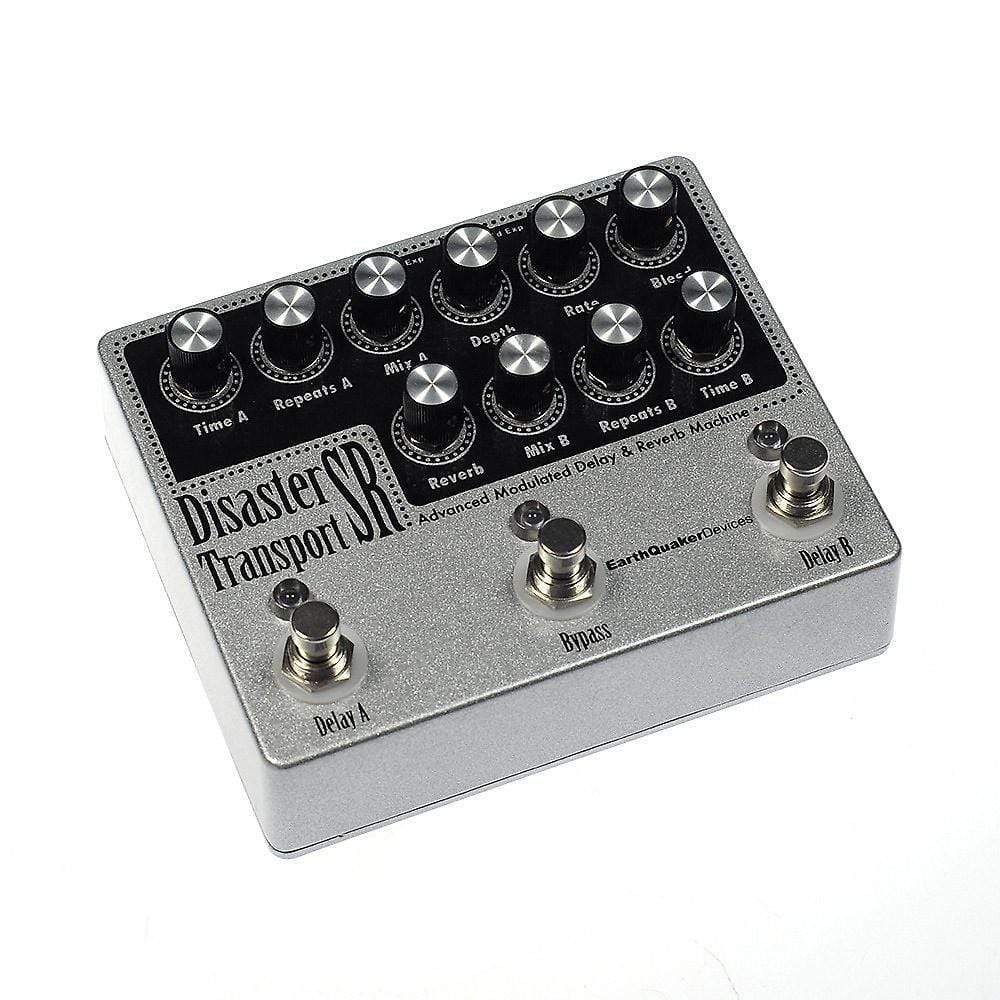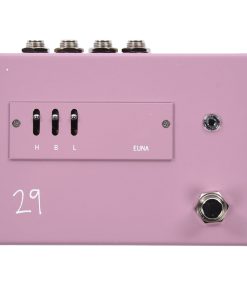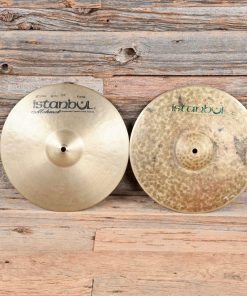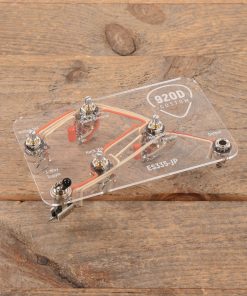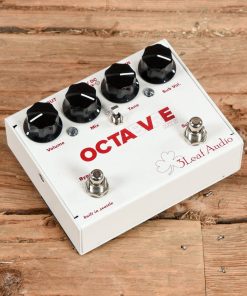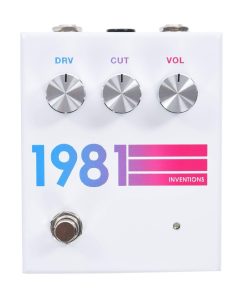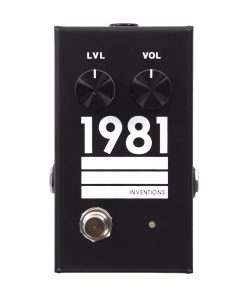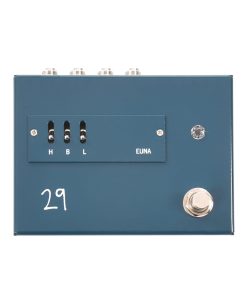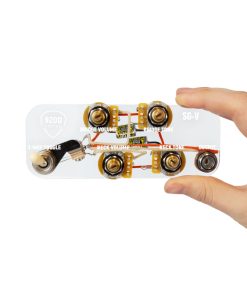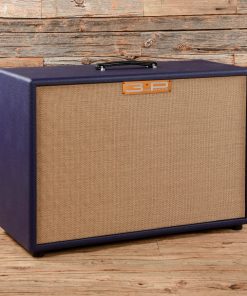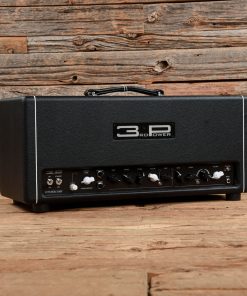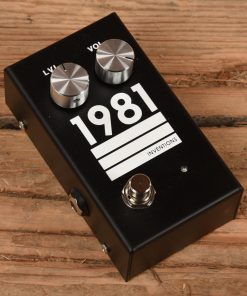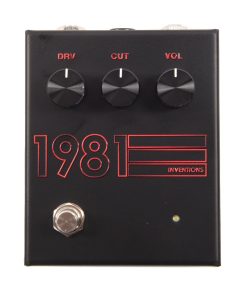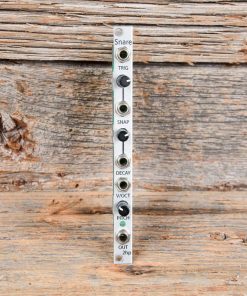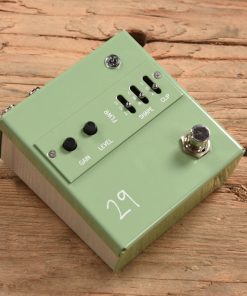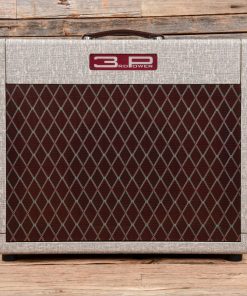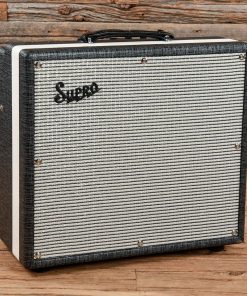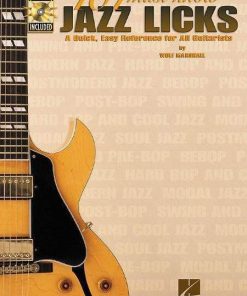Earthquaker Devices Disaster Transport SR Modulated Delay and Reverb Earthquaker Devices
$ 254,15 $ 101,66
The Disaster Transport Sr is the much anticipated and updated reissue of the limited run Ghost Disaster pedal from 2010. Unlike the first version, which combined our Ghost Echo and Disaster Transport Jr., the Disaster Transport Sr was designed from the ground up to create an intense wash of lo-fi swirling tape styled echo. While it may look intimidating at first glance, it’s actually pretty easy to navigate. The top row of controls are for delay A and the bottom row of controls are for delay B. Delay A is a 600ms delay with modulation and delay B is a 300ms delay with reverb. Both delays can be run separately, in parallel, in series or in series/parallel. To take it one step further, there are also expression controls for the repeats on delay A as well as bleeding delay A into delay B. The switching was designed so each delay can be used individually or in tandem with both true bypass or trails.
In addition to being used as a straight delay, straight reverb, rhythmic delay, modulated delay and old school tape-style echo, the Disaster Transport SR can also be used to create a wide variety of wild sounds ranging from warped records, clanging flange, smooth chorus, echoed out squalls and various other-worldly effects that will blow your mind, man. If you are a fan of old school tape delay and crazy lo-fi sounds, you will get hours of enjoyment every time you plug into the Disaster Transport Sr.
Hand made one at a time in sunny Akron, Ohio USA.
Delay A Controls
Time- Controls the delay time from about 30ms up to 600ms.
Repeats- Controls how many regenerations of the signal there are. This ranges from one single repeat through an endless wash into self oscillation. This can also be controlled via an expression pedal. The Moog EP-2 is recommended.
Mix- Level control for the wet signal. Unity is around center, anything above is boosted. Boosting this works great when using a distorted signal. Please keep in mind this is a gain control, a bit of hiss is normal when it’s above unity.
Depth- Controls the intensity of the modulation. From no modulation to all out seasick pitch bends.
Rate- Controls the rate of the modulation. The LED for delay A flashes in time with the modulation to visually show where the rate is set.
Bleed- This feeds delay A into delay B, post reverb (see block diagram for vi- sual explanation). Use this control for series or series/parallel operation to create rhythmic repeats, extra long delay time or an all out echo wash. This can also be controlled via an expression pedal. The Moog EP-2 is recommended. When using the bleed, experiment with the repeat controls on each delay line. Try using them in different settings, both together and individually, for different timing and textures.
Delay B Controls
Reverb- ontrols the amount of reverb added to the input of delay B.
Mix- Level control for the wet signal. Unity is around center, anything above is boosted. Boosting this works great when using a distorted signal. Please keep in mind this is a gain control, a bit of hiss is normal when it’s above unity.
Repeats- Controls how many regenerations of the signal there are. This ranges from one single repeat through an endless wash into self oscillation.
Time- Controls the delay time from about 30ms up to 300ms.
Switching
The switches for both delays switch the inputs only. The outputs are always connected. This allows you to have trails by always leaving the bypass switch engaged or to use the bypass switch as the master on/off for true bypass. Additionally, you can feed delay A in to delay B with the bleed control without having delay B switched on for a cleaner rhythmic delay.
Measures
5.5″ x 4.5″ x 2.5″ with knobs.
Power
A standard 9 DC power supply intended for musical instruments with a negative center 2.1mm barrel, 100ma minimum. We strongly recommend a high quality power supply with isolated outputs and good filtering to avoid unwanted noise. No battery Option.
WARNING: This product can expose you to chemicals including Cobalt, which is known to the State of California to cause cancer and birth defects or other reproductive harm. For more information go to .
Fast Shipping with Professional Packaging
We offer a wide range of shipping options due to our long-standing partnerships with UPS, FedEx and DHL. Our warehouse staff are trained to pack your goods exactly according to the specifications we offer. Before shipping the goods are thoroughly examined and secured. Every day, we send thousands of packages to clients from all over the world. Our determination to be the biggest online retailer in the world is shown by this. The warehouses are located in Europe as much as they are in USA.
Note: Orders with more than one product will be assigned a distinct processing time, dependent on the particular item.
Before shipping, we will examine the items ordered thoroughly before sending the items. The majority of orders are shipped within 48 hrs. The delivery estimate is between 3-7 days.
Returns
The stock is constantly changing and cannot be fully controlled by us because of the involvement of several parties including the factory and our warehouse. Stock levels can fluctuate at any given time. Please be aware that it is possible that your order could become unavailable even after you've placed your order.
Our policy is valid for a period of 30 days. If 30 days have passed by since your purchase however, we're unable to give an exchange or refund.
In order to be eligible for a refund your product must be unopened and in the same state as you received it. It should also be in the original package.
Related products
Effects and Pedals / Overdrive and Boost
29 Pedals Special Run Crunch Berry EUNA Elite Unity Amplifier Input Driver 29 Pedals
Drums and Percussion / Cymbals / Hi-Hats
Parts / Amp Parts
920D Custom ES335-JP Wiring Harness for Gibson/Epiphone ES-335 w/Four Push/Pulls 920D Custom
Drums and Percussion / Parts and Accessories / Drum Parts
Amps / Guitar Cabinets
3rd Power Amplification Dual Citizen 2-Channel 40-Watt Head w/ 2×12 Cab 3rd Power Amplification
Accessories / Books and DVDs
Effects and Pedals / Octave and Pitch
Effects and Pedals / Overdrive and Boost
1981 Inventions DRV Overdrive White Hyperfade 1981 Inventions
Effects and Pedals / Overdrive and Boost
Effects and Pedals / Overdrive and Boost
Parts / Amp Parts
Effects and Pedals / Wahs and Filters
Drums and Percussion / Acoustic Drums / Snare
A&F Drum Co. 1.75×14 Pancake Raw Brass Snare Drum A&F Drum Co.
Amps / Guitar Cabinets
3rd Power Amplification 2×12″ Guitar Speaker Cab 3rd Power Amplification
Amps / Guitar Combos
Accessories / Books and DVDs
Amps / Guitar Cabinets
3rd Power Amplification Kitchen Sink Guitar Head 3rd Power Amplification
Drums and Percussion / Acoustic Drums / Snare
A&F Drum Co. 1.75×14 Pancake Raw Brass Snare Drum A&F Drum Co.
Effects and Pedals / Overdrive and Boost
Effects and Pedals / Overdrive and Boost
1981 Inventions DRV Overdrive Black Hyperfade 1981 Inventions
Parts / Amp Parts
920D Custom LP50-SPLIT Les Paul Wiring Harness Upgrade w/Coil Split Mod 920D Custom
Effects and Pedals / Overdrive and Boost
1981 Inventions Special Edition Stranger DRV Overdrive Pedal 1981 Inventions
Keyboards and Synths / Synths / Eurorack
Drums and Percussion / Acoustic Drums / Snare
A&F Drum Co. 1.75×12 Pancake Raw Brass Snare Drum A&F Drum Co.
Effects and Pedals / Overdrive and Boost
Amps / Guitar Combos
3rd Power Amplification British Dream MKII 1×12 Combo 3rd Power Amplification
Accessories / Books and DVDs
Accessories / Merchandise
Drums and Percussion
20″ Craig Lauritsen Custom Rustico Crash Ride Cymbal USED Chicago Music Exchange
Amps / Guitar Cabinets
1695T Black Magick 25-Watt 1×12″ Guitar Combo Chicago Music Exchange
Parts / Amp Parts
Accessories / Books and DVDs
